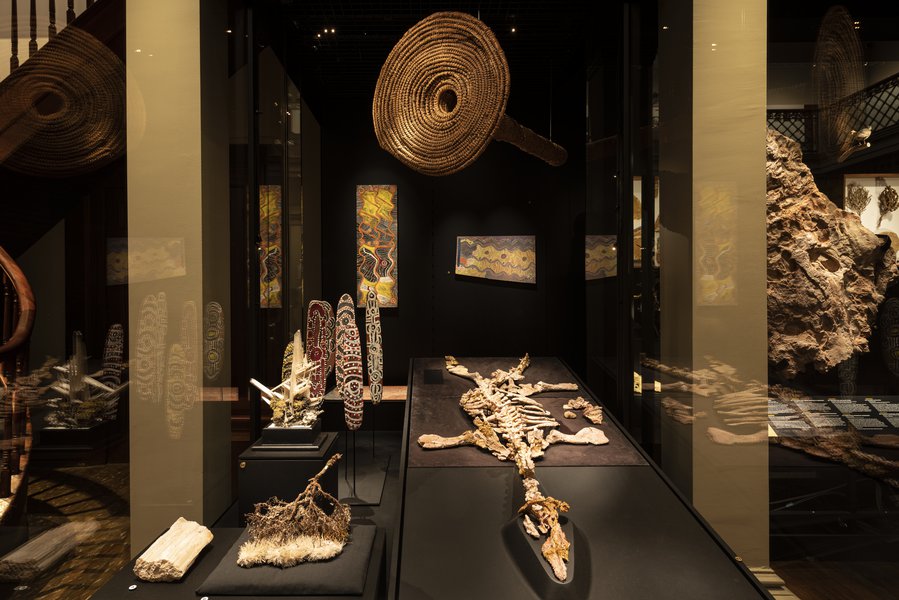This showcase contains the almost complete fossilised skeleton of a pliosaur, looking somewhat like the skeleton of a large seal (1.8 m long), except that the fossil bones have a slightly glistening appearance, being opalised. To the right of the pliosaur’s rib cage are two piles containing stones and small fossilised fish bones that were found in the pliosaur’s stomach.
To the left of the pliosaur at the front of the showcase is a portion of a gypsum column, pinkish in colour. It has an irregular cross-section, about 6 by 13 cm, but its length (20cm) is almost straight and smooth. To its right is a small tree branch with white gypsum crystals clustered around its ends.
Behind these is a piece of the mineral cerussite, that formed on a fist-sized lump of rock. Its larger crystals issue upwards and smaller ones angle to the sides.,The crystals are smooth, glassy and light grey criss-crossing in a lattice, with the dominant angle being 60°. The tallest crystal stands about 25 cm high with the others being of various sizes.
Behind the cerussite is a group of six vertically-mounted dance boards, facing to the side and front of the showcase. These are made of mulga wood, and are all around the length of a forearm but only a hand’s width wide, and rounded at the top and bottom. They are all painted differently, in browns, earthy reds, yellows and white, five with a dot technique and one with intricate lines.
Right at the back of the showcase are three paintings on masonite, using a similar colour palette. One of these lies horizontally on a plinth and two are mounted on the back of the showcase, one oriented in portrait and the other in landscape.
Suspended from the top of the showcase is a cane eel trap. The front of the trap is a wide circle, about 70 cm in diameter. The hole at the centre is about 10cm wide, and is the opening of a long cylinder about 1.3 m in length and 10 cm in diameter, with the cane winding around in a spiral.

